Amish Elegance
Schadenfreude
- Joined
- May 1, 2006
- Messages
- 3,465
I've never seen this posted, so I thought I would.
Out of curiosity, I gutted my blown valve to cipher on how I might make it whole again.
After tweaking the helicoil slightly (seen far right) it spun right out. Then with a couple twists of an allen wrench the hollow plug spun out. I was expecting more whiz-bang.
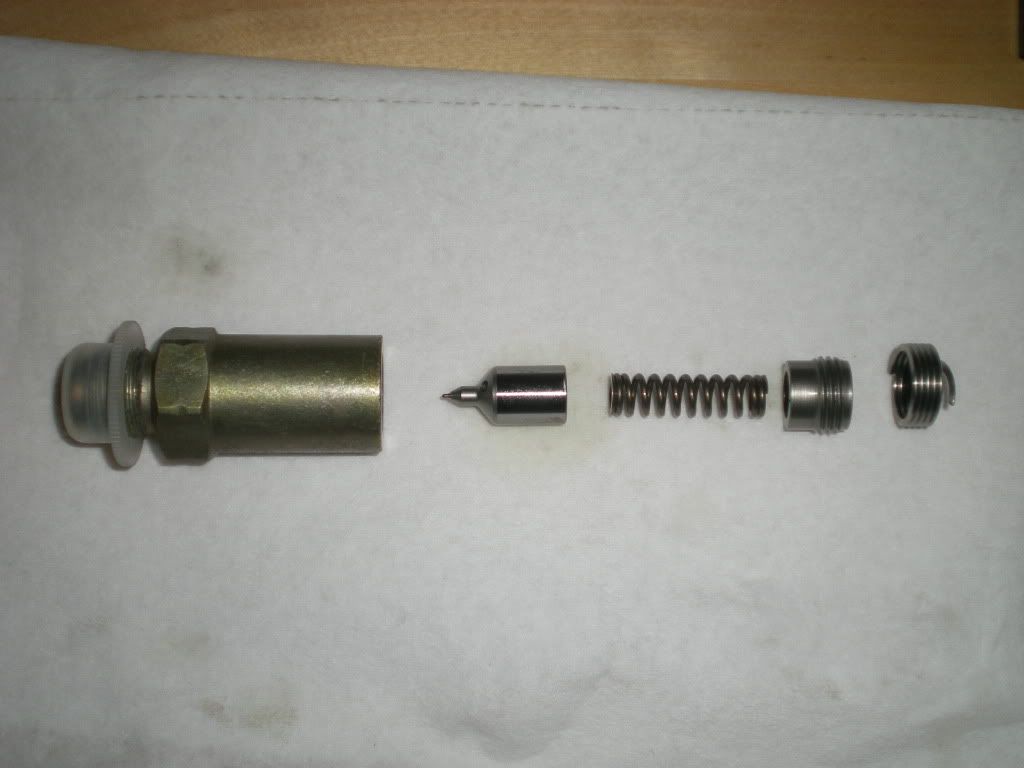
Innards.
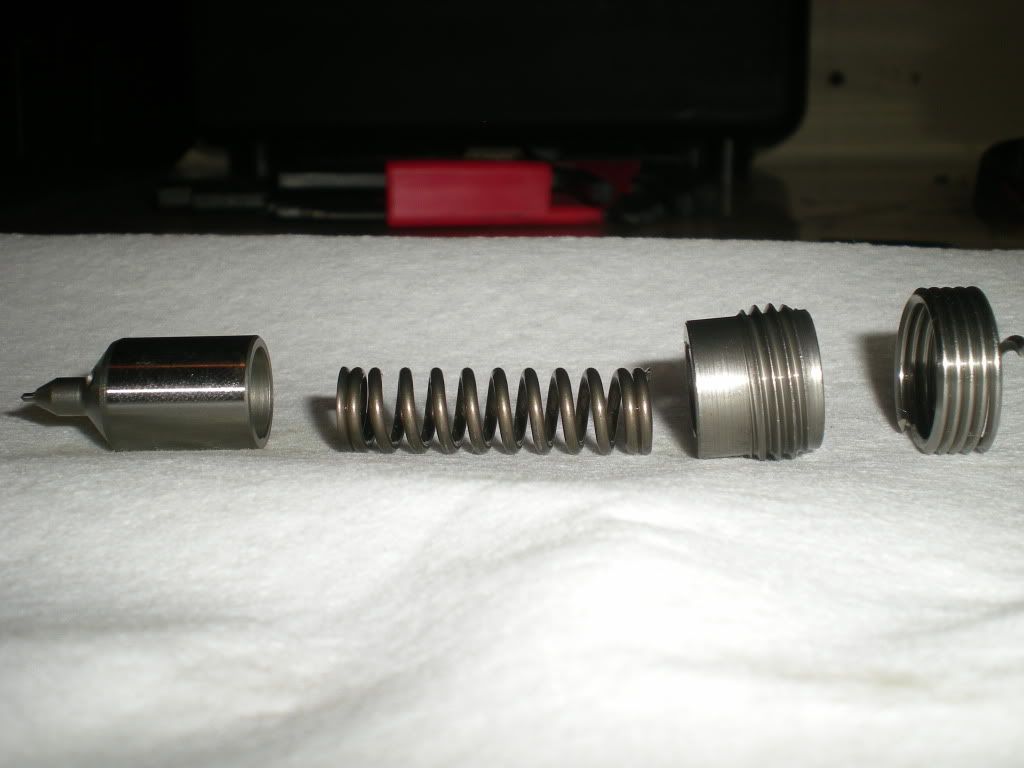
The needle valve responsible for holding all that pressure, normally anyway.

Once it lifts, there's two holes that allow it to piss fuel pressure rather efficiently out the return.
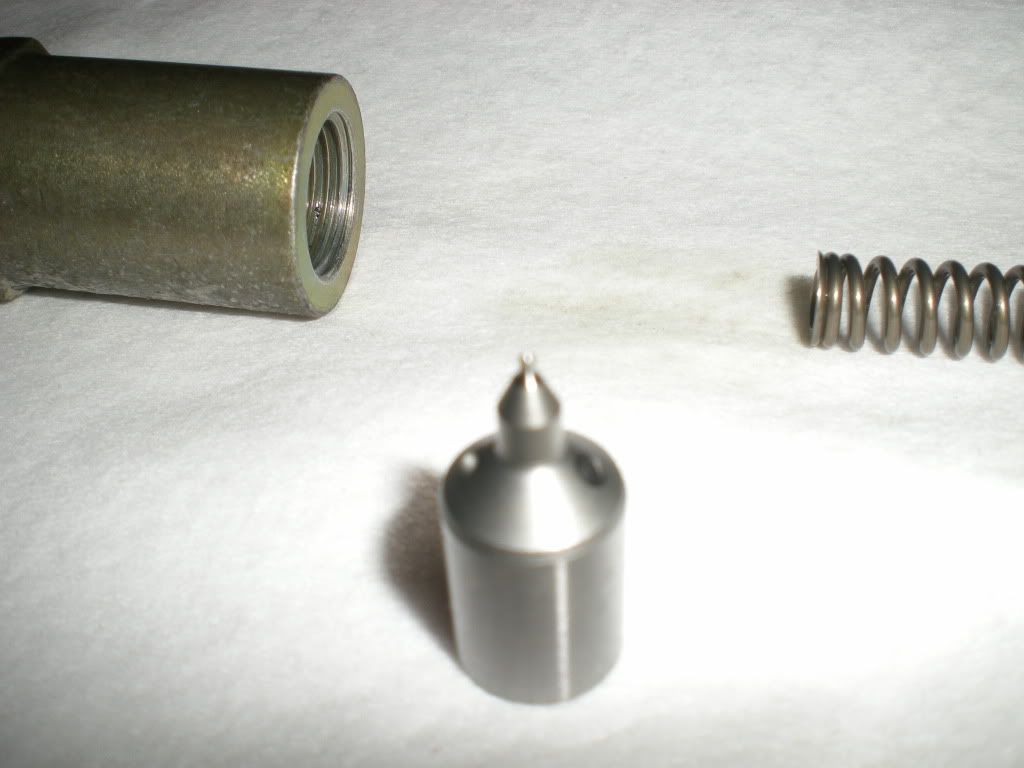
Crappy pic of the holes. Sorry.
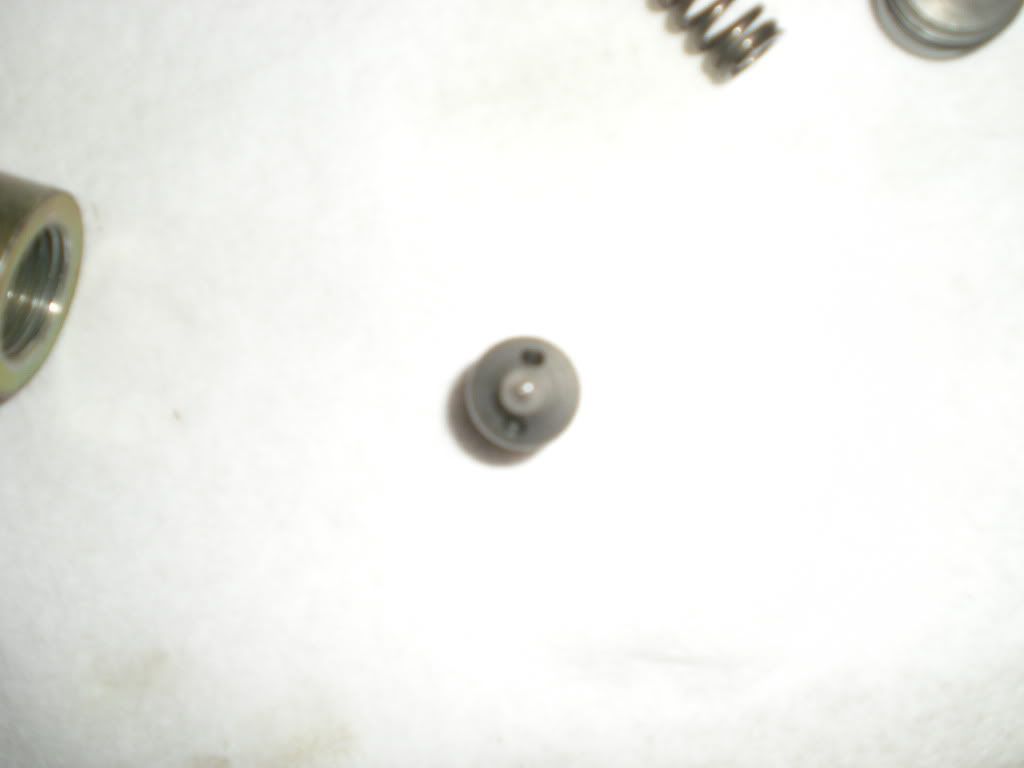
A Few shots of the body showing how the needle sits in the taper.
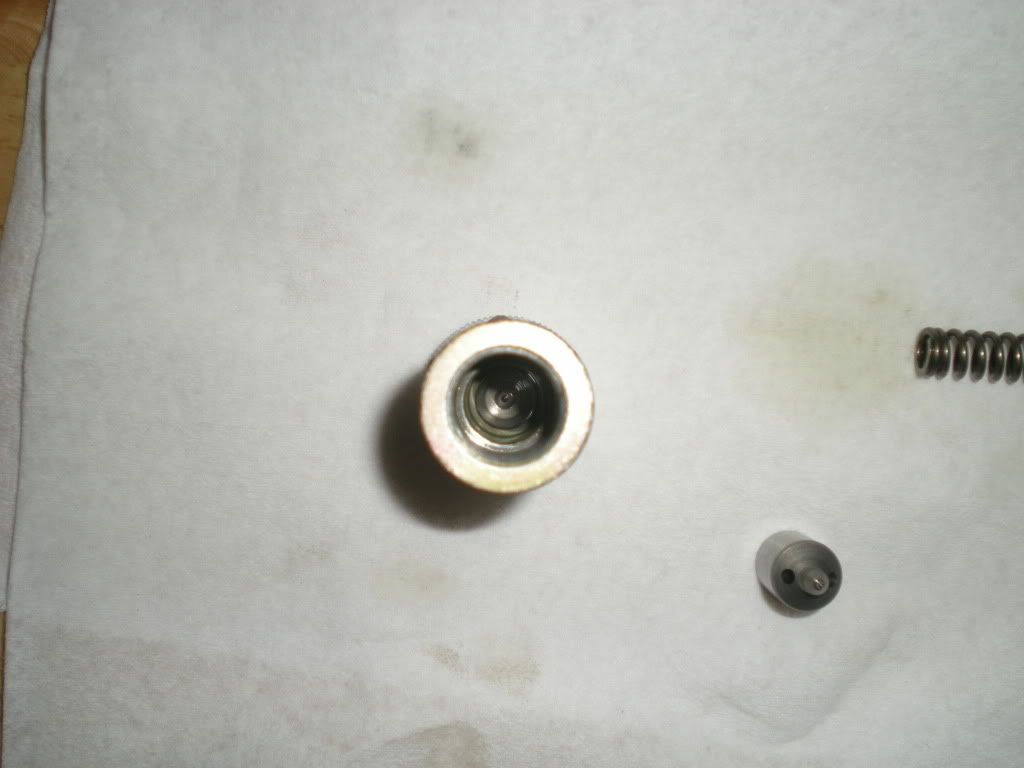
Interestingly enough, Dual CP3's can make enough pressure even shooting through this hole to have a truck run ok. No codes, no nothin.

***Fat Bastard Voice ***
"Whoa, ees tiny!"
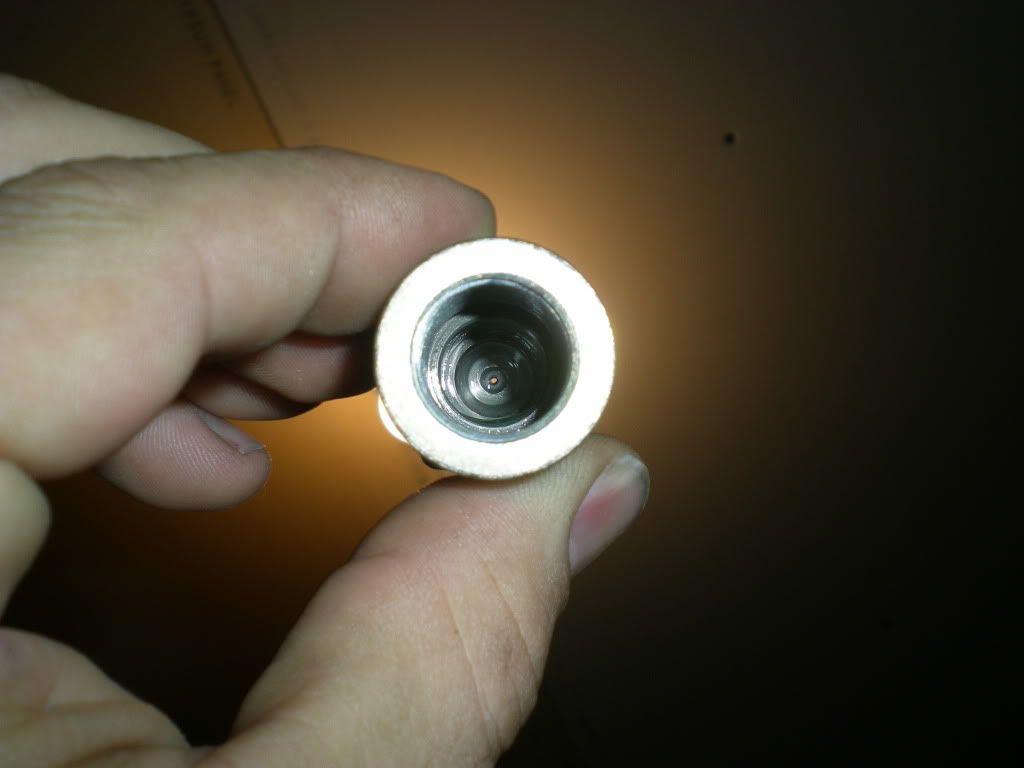
Everything stacked up as in the housing.

If you haven't seen it, now ya have.
Can somebody explain to me what craps the bed and makes this thing worthless after a pop or two?
The only wear I can see is a little polish on the tip of the needle where it lifted on many occasions while I chased my tail figuring it out. :doh: The spring still has some boing to it, but I'm curious as to what causes it to fatigue after only one or two cycles?
Out of curiosity, I gutted my blown valve to cipher on how I might make it whole again.
After tweaking the helicoil slightly (seen far right) it spun right out. Then with a couple twists of an allen wrench the hollow plug spun out. I was expecting more whiz-bang.

Innards.

The needle valve responsible for holding all that pressure, normally anyway.

Once it lifts, there's two holes that allow it to piss fuel pressure rather efficiently out the return.

Crappy pic of the holes. Sorry.

A Few shots of the body showing how the needle sits in the taper.

Interestingly enough, Dual CP3's can make enough pressure even shooting through this hole to have a truck run ok. No codes, no nothin.

***Fat Bastard Voice ***
"Whoa, ees tiny!"

Everything stacked up as in the housing.

If you haven't seen it, now ya have.
Can somebody explain to me what craps the bed and makes this thing worthless after a pop or two?
The only wear I can see is a little polish on the tip of the needle where it lifted on many occasions while I chased my tail figuring it out. :doh: The spring still has some boing to it, but I'm curious as to what causes it to fatigue after only one or two cycles?
